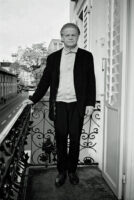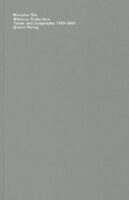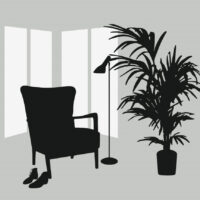That Analogue City
Lecture Geert Bekaert Award ceremony 16 November 2019

 This is rather like a TV talent show: you do have a pretty face, but can you also dance? I’m not much for prize circuses and am not a dancing horse. But even though they are horse remedy: evenings like this are useful as long as they promote architectural criticism.
This is rather like a TV talent show: you do have a pretty face, but can you also dance? I’m not much for prize circuses and am not a dancing horse. But even though they are horse remedy: evenings like this are useful as long as they promote architectural criticism.
For a number of reasons, I don’t think I should perform too obligatory a dance for you. I don’t have the talent for it. My text is already known to the jury and is on the internet in shorter form. I read that my dance is a tribute to the architect Miroslav Šik. That was surprising. I prefer to avoid the hagiographic genre. This is no place to fluff other people’s feathers. Such dances do not strike me as a tribute to the name giver of this architectural criticism fest, Geert Bekaert. Today’s gathering is about World Images. I serve architectural criticism best with a presentation of one of Šik’s own most provocative texts: Jene analoge Stadt.
I have translated three excerpts.
i
Day after day, radical attacks on the city, in which one believes one recognises diabolical madness, are carried out. That was -some older contemporaries will object- no different in the past. But with unlimited modernisation, the Radicals have, for the first time in human history, tools in their hands that can change the city completely, here and now, without a trace. Today’s radical is equipped as Total. As Total, as Totalitarian, as Utopia. (…) That is why ‘the city’ is synonymous with aesthetic monotony, blasé and sterility, while ‘that city’ is a multiple, vibrant and endless analogical representation. (…) That city has been built. Wherever you look it possesses, compared to the Radicals, the form of architectural concrete things. Admittedly, the look of urban design is not always easy to grasp and certainly not to capture in slogans. For often different cities follow each other in the same place and under the same spot. Yes, cities pop up and disappear again without informing each other. And so in that city, cities pile up on top of each other, only to collapse one day into near-nothingness. Only minimal undulations in the ground, an austere geometric row of trees or abandoned building blocks decipher the secret writing of the past.
ii
That city -and I choose the most extreme examples- has also been realised on the wastelands of speculators, in the no man’s land between irreconcilable brother states and even on the ruins of war disasters. When we go out and wander through these cultural landscapes -or better: cultural urban landscapes- the varied impressions of soil, vegetation, roads and ruins merge into a whole. All these places have traditionally been classified as wrong and have fallen victim to -so-called and so legitimised- urban renewal at the first opportunity. No doubt, these places do not emanate the great flaming and all-important moments that define the contours of city centres. Nonetheless, these broken fragments, these remnants of an old city, these memorials of wrongdoing and wickedness in the grand coherence of the urban landscape are not a secondary part of their more pretentious siblings. Of much of the urban orchestration, I do not understand charm of the macabre, and certainly not the moralistic index finger with which ugliness is musealised as a warning. All that exhausted itself all too clearly in bloodless gestures. It is about the discreet beauty and grace of those places, about their functionality in urban substance as small architecture and about their hidden vitality.
iii
However, this is not a plea for brokenness. That city is also built in the urban periphery, in the carpets of industrial sites, in the districts of modern post-war architecture. There is no bare and inhospitable City; ‘concrete’ is not inhuman; it is one of the possible expressions in architecture. Usually, those sad notions of kitsch and surrogacy evaporate for me as they ironise the city of suburbia, allotments and mobile homes. We young people also grew up in these neighbourhoods and streets. Their formal features have bonded with our tears, loves and disappointments. That city has become our city, stronger: it always has been. I am convinced that we will very soon discover the magic of that city, the magic that is in no way inferior to that of the radical city, and which the moderns and postmoderns could not or would not discover. Together with the architecture of the old city and the invisible city of comic strips, family albums and videos, we have a polyphonic, subtle and rich city at our disposal. That city is our city.
Podcast
